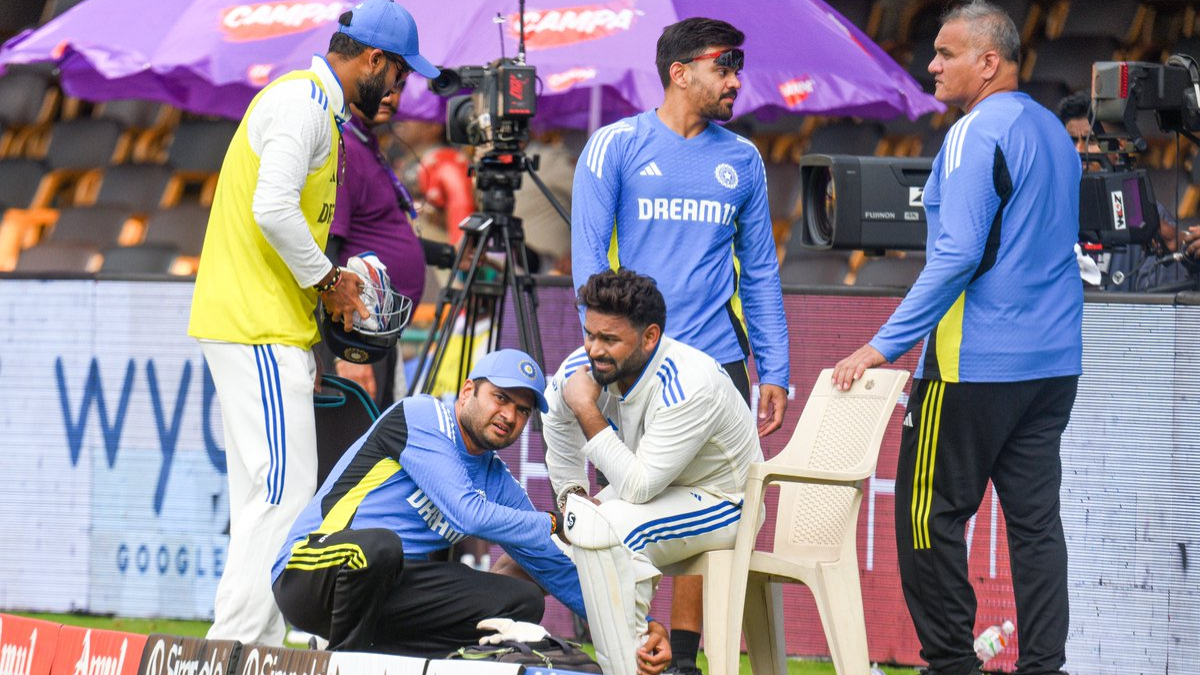Rishabh Pant’s injury during the first Test match between India and New Zealand has raised concerns among fans and cricket experts alike. The incident, which occurred on Day 2, saw Pant sustain a swelling on his previously operated-on knee after taking a blow from a sharply spun ball. This latest setback comes after Pant’s remarkable recovery from a serious car accident in late 2022, which required extensive surgery on his left knee. The BCCI’s official confirmation that Pant would be unable to keep wickets on Day 3 underscores the seriousness of the situation and highlights the ongoing challenges in his rehabilitation. This incident has sparked a renewed focus on Pant’s recovery journey and the delicate nature of his rehabilitation process, leaving many questioning his long-term prospects and the management of his injury. The impact of this setback on both his immediate participation in the ongoing test series and his longer-term career trajectory necessitates a detailed analysis.
Rishabh Pant’s Injury: A Detailed Overview
The Incident and Initial Assessment
During the 37th over of New Zealand’s first innings, a sharply spun delivery from Ravindra Jadeja struck Rishabh Pant’s left knee. The impact was significant enough to cause immediate discomfort, resulting in Pant limping off the field. The area affected was the same knee that underwent multiple surgeries following his devastating car accident in December 2022. Initial reports suggested swelling and tenderness in the affected knee muscles, prompting immediate concern about a potential setback in his recovery. The seriousness of the injury was immediately apparent given its location on the previously injured knee cap and the visible pain and discomfort exhibited by Pant. The swift replacement of Pant by Dhruv Jurel behind the stumps indicated a likely longer-term issue.
BCCI’s Official Statement and Pant’s Status
The Board of Control for Cricket in India (BCCI) issued an official statement confirming that Pant would not be keeping wickets on Day 3 of the Test match. While they did not specify the severity of the injury, the decision to rule him out of wicket-keeping duties suggests a degree of concern and the need for ongoing medical assessment. The BCCI’s medical team is continuously monitoring Pant’s progress, and further updates are expected as his condition evolves. The lack of precise details in the official statements leaves room for speculation, but highlights the cautious approach being adopted by the BCCI in managing Pant’s recovery. This cautious approach reinforces the understanding of the potential long-term consequences of such a setback for Pant’s career.
Impact and Implications of the Injury
Immediate Consequences for the India Team
The injury to Pant poses immediate challenges for the Indian team. His absence behind the stumps necessitates the continued presence of Dhruv Jurel, which can slightly affect the team dynamics and potentially have ramifications for the team’s strategy. While Jurel provides capable replacement as a wicket-keeper, Pant’s batting prowess is a considerable loss. His absence will create a void in the middle order, making the team’s batting strategy susceptible to further scrutiny. It emphasizes that injury setbacks are an intrinsic element of elite-level sport that can dramatically alter the course of a match and indeed an entire series.
Long-Term Implications for Pant’s Career
The recurrence of pain and swelling in the previously operated knee raises questions about Pant’s long-term health and the full recovery from his car accident injuries. The extent to which this incident might impact his cricketing future remains uncertain. While there is no confirmed diagnosis beyond the initial assessment of swelling, and no concrete statement about time needed for his complete recovery, this setback, on the heels of his major recovery from the accident, is unsettling. The need for meticulous monitoring and cautious rehabilitation is paramount in ensuring a complete recovery and preventing long-term limitations in his career. The long-term effects on Pant’s cricketing ability are to be considered cautiously and strategically.
Analysis and Future Outlook
Evaluating the Severity and Recovery Timeline
Assessing the full severity of Pant’s injury will require further medical evaluation. The current information suggests a degree of swelling and tenderness. More comprehensive scans and examinations would provide clarity on the precise nature and extent of the damage. Without these further details, creating an accurate prognosis for his return to the field and recovery timetable remains premature. Determining how this setback affects his planned return to full international play necessitates close attention to his progress by medical professionals. A cautious rehabilitation approach might be necessary to ensure optimal recovery while preventing further injuries.
Strategies for Prevention and Management of Recurrence
To mitigate the risk of future injuries, both injury prevention strategies and meticulous rehabilitation plans are essential. These measures could include strengthened muscle support, modified training protocols, and detailed planning of game strategy. The overall focus of both treatment and long-term training should emphasize preventing stress to the already compromised knee and strengthening surrounding support structures. Long-term plans are also necessary for him to fully realize his cricketing capabilities without compromising his physical wellness. By minimizing stresses in this knee, the longer-term impact on Pant’s career can be hopefully lessened.
Takeaways:
- Rishabh Pant suffered a knee injury during the India vs. New Zealand Test match.
- The injury is to his previously operated-on left knee, raising serious concerns.
- Pant will not be keeping wickets in the immediate future, affecting the Indian team.
- The long-term effects of this injury on Pant’s career require careful monitoring and rehabilitation.
- Both immediate injury management and longer-term strategies must focus on minimizing the chance of further injury and recurrence.




